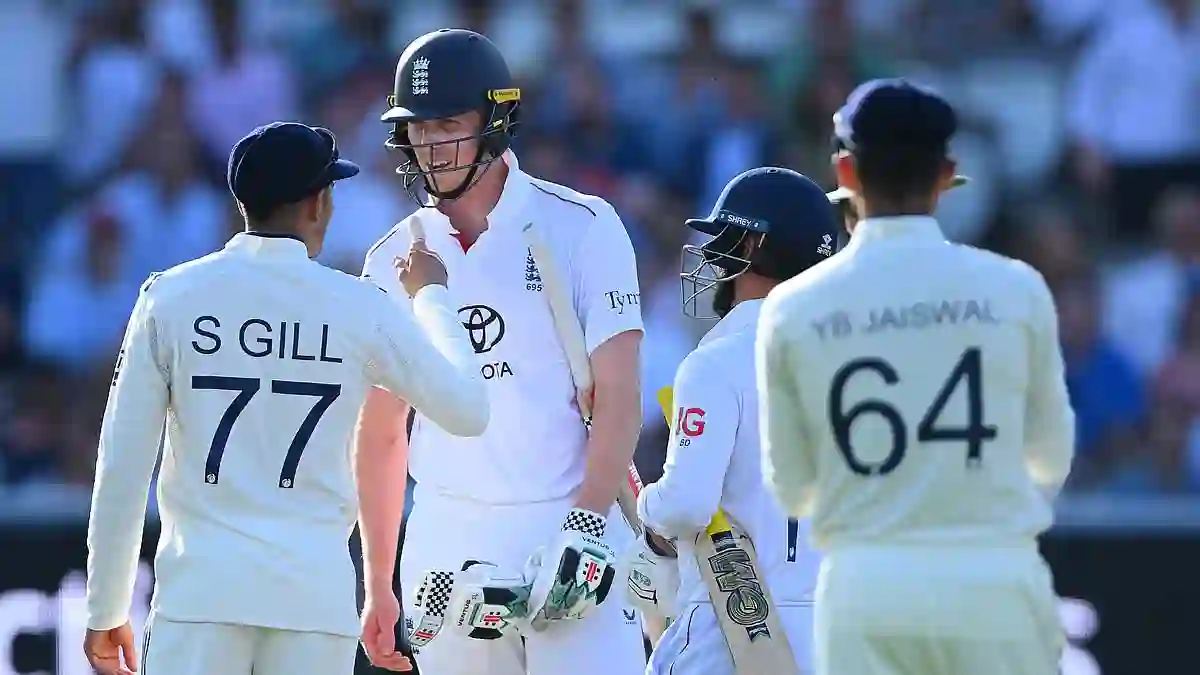What started as a heated exchange between a famous Indian cricket coach and a British groundsman has turned into something much deeper.
The face-off between Gautam Gambhir, former Indian cricketer and politician, and Lee Fortis, an English groundsman, might’ve seemed like a one-off clash at The Oval.
But in truth, it’s the latest flare-up in a rivalry between two cricketing giants whose relationship stretches far beyond sport—into politics, history, and national pride.
A Gentleman’s Game with a Growing Grudge
The Gambhir-Fortis moment might’ve been minor—just a tense conversation on a cricket square—but it opened a window into the deeper cracks forming between the Indian and English cricket communities.
Both sides, it seems, are constantly on edge, ready to interpret the smallest incident as an insult.
Things really started to boil this series when Zak Crawley was accused of timewasting at Lord’s.
Then Shubman Gill fired back by accusing England of breaching the “spirit of the game.”
When Ben Stokes’s team threw a tantrum after Indian players Washington Sundar and Ravindra Jadeja chose to chase centuries instead of accepting a draw, tensions hit a peak.
And in between all of this? Plenty of sledging, mocking, send-offs, and off-field jabs—exactly the kind of stuff that turns a competitive series into a cultural standoff.
Colonial Shadows Still Linger Over the Field
At a diplomatic reception in London, Gambhir didn’t mince words when he reminded listeners that touring England will always be “challenging” because of the “history between the two countries.”
Whether he was trying to make peace or point fingers, the colonial undertones were clear—especially when he closed with the nationalist phrase “Jai Hind.”
Now imagine if Brendon McCullum, England’s coach, ended a press conference with “Rule Britannia.”
It’d raise more than a few eyebrows. But that’s exactly the point—India’s cricketing identity today is inextricably tied to its post-colonial pride.
And for many Indians, the sport is not just about runs and wickets. It’s about reclaiming power.
India Has Taken Control—And England Knows It
Not too long ago, England and Australia called the shots in world cricket.
They even had boardroom veto power until the early ’90s.
But today, the tables have turned—India’s cricket board (BCCI) now controls a staggering 85% of the sport’s global revenue.
From Mumbai’s Wankhede Stadium, they’re not just steering the game—they’re demanding respect.
And that shift in power has sparked its own tensions. England sees India as spoiled and entitled.
India sees England as stuck-up and colonial. That’s a recipe for constant friction.
From Shirtless Celebrations to Jelly Bean Drama
Over the years, the rivalry has produced its fair share of odd and symbolic flashpoints.
Who can forget when Andrew Flintoff ripped off his shirt after a big win in Mumbai in 2002? Or when Sourav Ganguly returned the favor months later from the Lord’s balcony, sending Indian fans into celebration?
Then there was the infamous jelly bean incident at Trent Bridge in 2007, when Ian Bell tossed one onto the pitch to unsettle Zaheer Khan, who took offense and bowled like a man possessed.
Every gesture, no matter how small, seems loaded with meaning when these two teams meet.
Trust Issues and Suspicions on Both Sides
These days, both camps are overly cautious.
Indians feel the English are quick to whine, especially when criticizing spin-friendly pitches.
The English, on the other hand, think India gets touchy about even the slightest perceived disrespect.
When Shubman Gill claimed England’s openers strolled out 90 seconds late at Lord’s, the question wasn’t whether it happened—but why the umpires didn’t intervene.
To some in India, it fed into the idea of “arrogant Englishmen” skirting the rules.
A senior Indian broadcaster admitted: “Our antennae are always up here.”
Longer Series, Longer Grudges
Since 2014, England and India have stretched their series from three to five Tests.
And the longer the series, the more likely tempers will flare.
The fifth Test has become a pressure cooker—just ask Jimmy Anderson, who was told by Gill to retire during a match in India last year.
Anderson, never one to back down, promptly dismissed him a few balls later.
The rivalry also gave us the classic battle between Ben Stokes and Virat Kohli, who clashed like wild stags in Mohali in 2016.
Kohli’s smug send-off? Not forgotten.
Stokes’s mockery of Kohli’s shushing gesture? Equally petty. And equally memorable.
IPL: A Missed Opportunity for Bridge Building?
You’d think the Indian Premier League (IPL) might help bring players closer—after all, they share dressing rooms and franchises.
But in reality, few of England’s current squad are IPL regulars.
Harry Brook is one of the few exceptions, and he’s become unpopular in India after clapping back at critics following a big IPL knock.
And Ben Duckett’s half-joking remark that Yashasvi Jaiswal’s double centuries were a Bazball copycat move? That didn’t go down well either.
The Game That Changed Hands
There’s a quote often tossed around: “Cricket is an Indian game accidentally invented by the British.”
And today, that rings more true than ever. India doesn’t just play the game—it drives it, funds it, and defines it.
But with that power comes pride, and with pride comes confrontation.
Indian players like Gambhir and Gill are more than cricketers now—they’re cultural representatives, standing firm in a country where cricket is stitched into the national fabric.
What’s Coming Next at The Oval?
The final Test at The Oval kicks off Thursday at 11am, with everything still to play for—and plenty of grudges still simmering.
It won’t just be a cricket match.
It’ll be another chapter in a centuries-old contest of pride, politics, and power.
England might still talk about spirit.
But India, now fully in control, talks back—with swagger.
